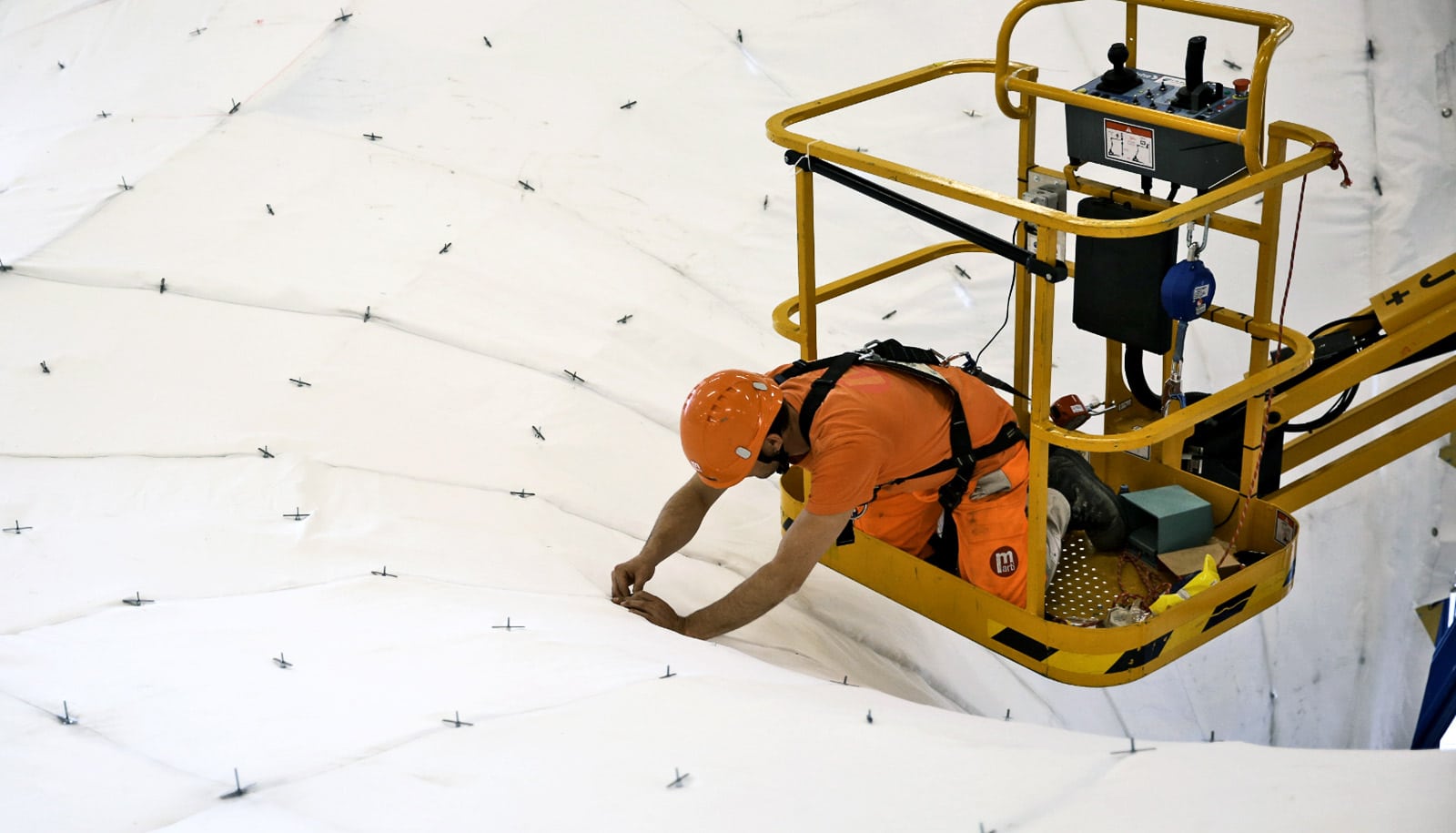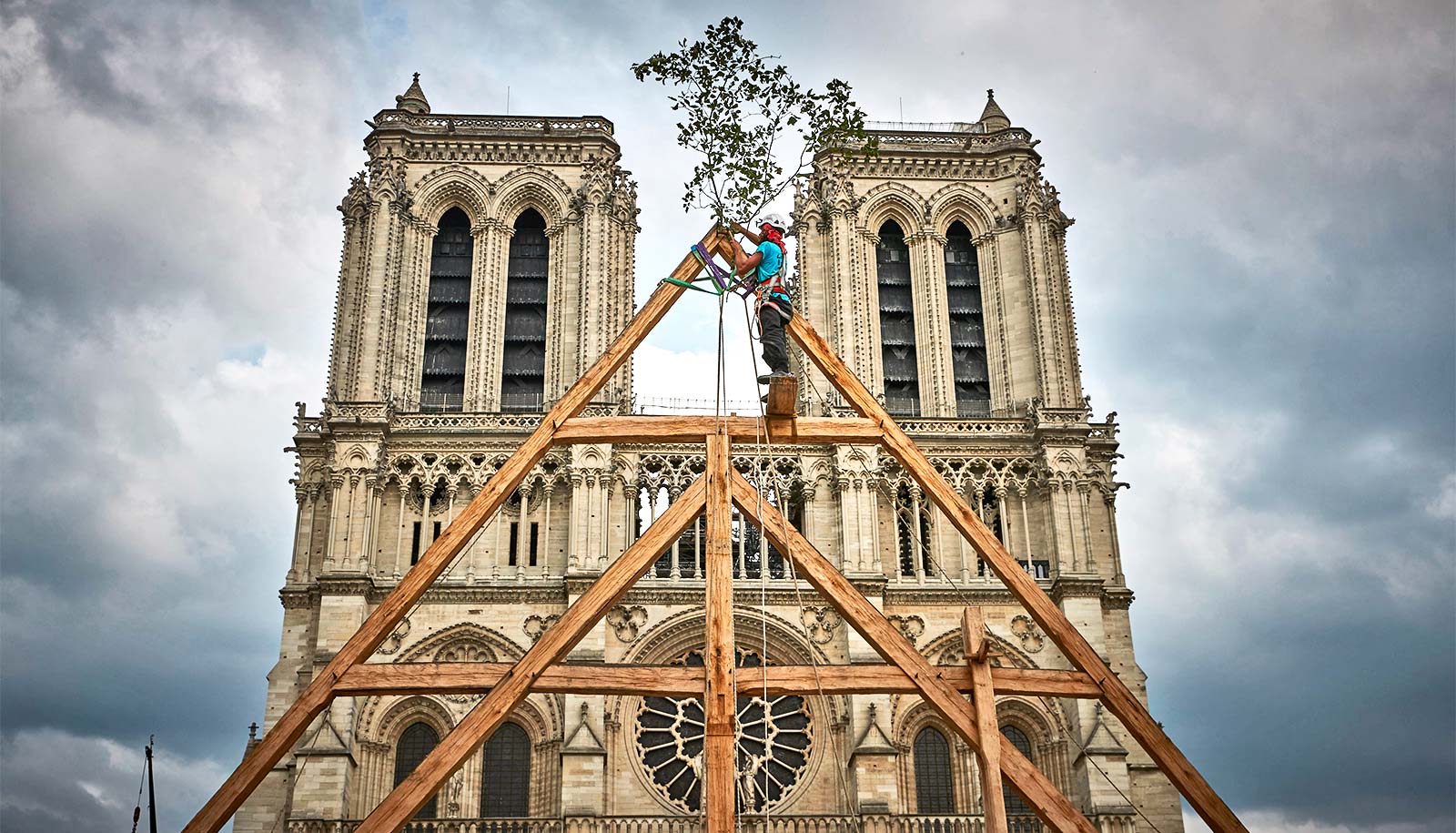Using unique design and building methods, researchers have created a prototype for an ultra-thin, curving concrete roof that will also generate solar power.
The self-supporting, doubly curved shell roof has multiple layers: the heating and cooling coils and the insulation are installed over the inner concrete layer. A second, exterior layer of the concrete sandwich structure encloses the roof, onto which builders install thin-film photovoltaic cells.
Philippe Block, a professor of architecture and structures at ETH Zurich, and Arno Schlüter, a professor of architecture and building systems, led the team. They want to put the new lightweight construction to the test and combine it with intelligent and adaptive building systems.
The shell is part of a roof-top apartment unit called HiLo that will go up next year on the NEST, the living lab building of the Swiss Federal Laboratories for Materials Science and Technology and the Swiss Federal Institute of Aquatic Science and Technology in Dübendorf, Switzerland.
Eventually, thanks to the technology and an adaptive solar façade, they expect the residential unit to generate more energy than it consumes.
The Block Research Group developed the building technique with the architecture office Supermanoeuvre and tested it on a full-scale prototype.
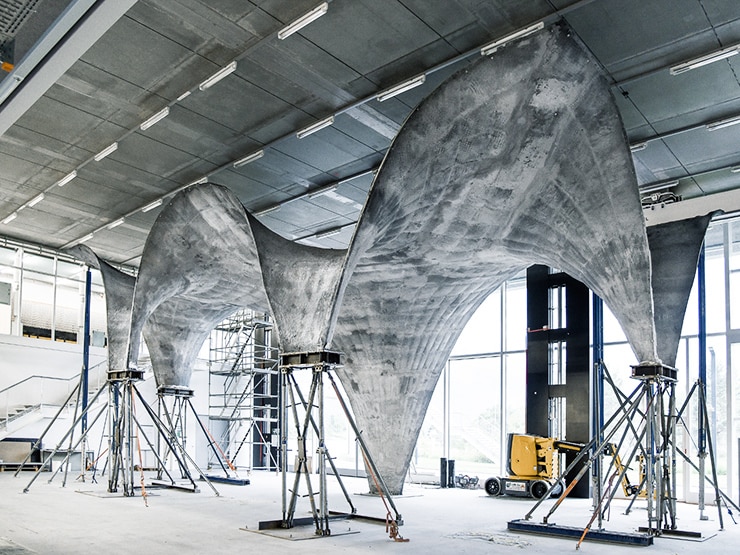
The prototype, which has already been dismantled to make space for future experiments, was 7.5 m high with a surface area of 160 m2 (covering an area in plan of 120 m2). The thickness of the concrete has an average thickness of 5 cm varying between 3 cm along the edges of the roof to 12 cm at the support surfaces.
Instead of formwork using non-reusable custom-fabricated timber or milled foam, which would be necessary to realize such sophisticated form, the researchers used a net of steel cables stretched into a reusable scaffolding structure. This cable net supported a polymer textile that together functioned as the formwork for the concrete. This not only enabled the researchers to save a great deal on material for construction, but also to provide a solution to efficiently realize completely new kinds of design.
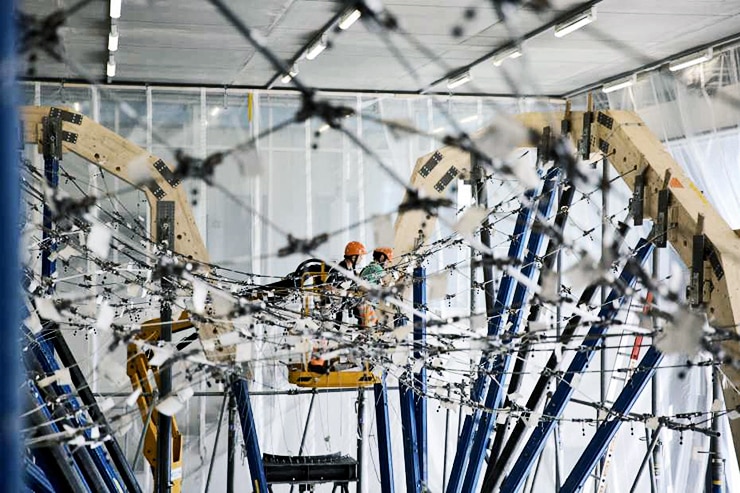
Another advantage of the flexible formwork solution is that during the concreting of the roof, the area underneath remains unobstructed and thus interior building work can take place at the same time.
The cable net is designed to take on the desired shape under the weight of the wet concrete, thanks to a calculation method developed by the Block Researcher Group and their collaborators in the Swiss National Centre of Competence (NCCR) in Digital Fabrication. The algorithms ensure that the forces are distributed correctly between the individual steel cables and the roof assumes the intended shape precisely. The cable net weighs just 500 kg and the textile 300 kg; thus, with a total of only 800 kg of material the 20 tons of wet concrete are supported.
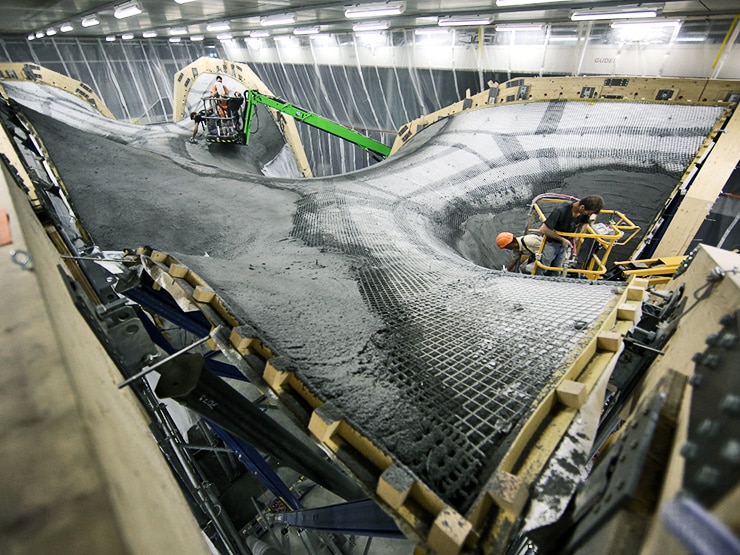
Experts from Bürgin Creations and Marti sprayed the concrete using a method developed specifically for this purpose, ensuring that the textile could withstand the pressure at all times.
The scientists determined the correct concrete mix, which had to be fluid enough to be sprayed and vibrated yet viscous enough to not flow off the fabric shuttering, even in the vertical spots.
Block’s team built the prototype over the course of six months. It represents a major milestone for the NEST HiLo project: “We’ve shown that it’s possible to build an exciting, thin concrete shell structure using a lightweight, flexible formwork, thus demonstrating that complex concrete structures can be formed without wasting large amounts of material for their construction.
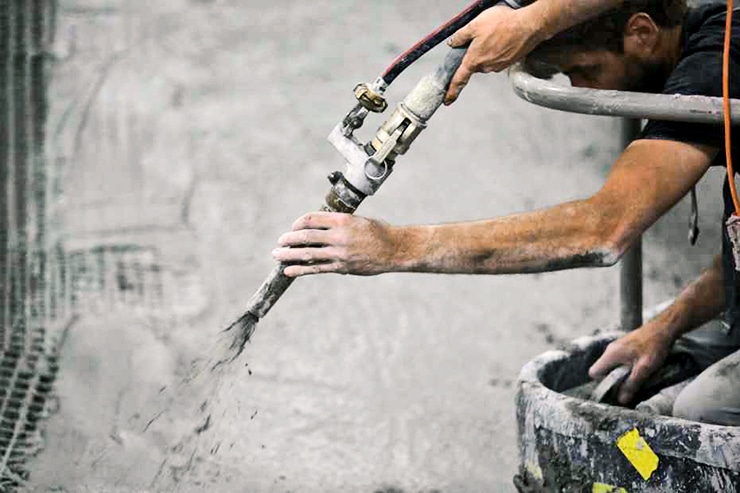
“Because we developed the system and built the prototype step by step with our partners from industry, we now know that our approach will work at the NEST construction site,” says Block.
The individual components of the roof structure are reusable. The cable net can be dismantled into a few parts that can be quickly reassembled and rehung.
Gothic cathedrals inspire very thin concrete floors
The process to get to this point took almost four years, from the start of the project to the finished prototype, partly because Block wanted to involve several industry partners in development of the prototype. Next year, he plans to build the roof once again at the NEST building in eight to ten weeks.
Source: ETH Zurich
